Sarah Browning, Nebraska Extension Educator
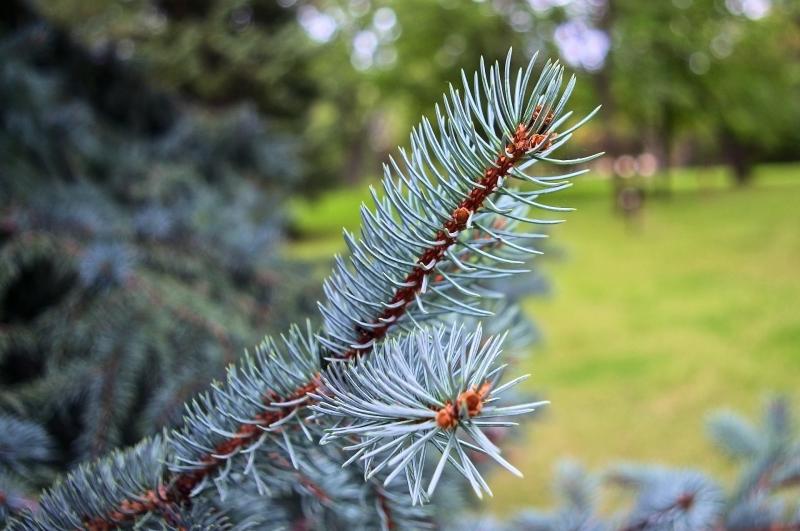
Colorado blue spruce is a common tree in many landscapes.
All pine trees have needles, but all needled evergreens aren't pine trees any more than all dogs are dachshunds. Telling pines, firs and spruces apart isn't any harder than distinguishing beagles, Bassett hounds or bloodhounds -- you just need to know how each one is distinctively different from the others.
Step One: Look at the needles. Are they arranged singling on the branch or in groups?
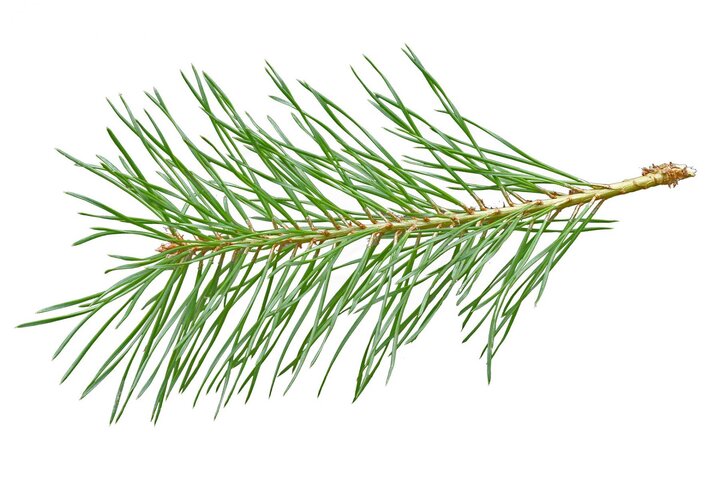
If the needles are clustered in groups, you’re looking at a pine tree. Pine needles are usually in groups of two, three or five and may be long, short or somewhere in between, but if you find needles in bundles, you have a pine tree. Here are a few more details about common pines found in Nebraska.
- Eastern white pine - needle bundles of 5, 2-4 inches long, soft and pliable
- Scotch pine – needle bundles of 2, 1-3 inches long and twisted along their length
- Austrian pine – needle bundles of 2, 3-5 inches long, sharp point
- Ponderosa pine – needle bundles of 3, 5-10 inches long, sharp point
Step Two: If the needles are not in bundles, but are produced singly, then you have either a fir, spruce or yew. Take a closer look at the shape of the needles. Cut one across, is it square in cross section or flat?
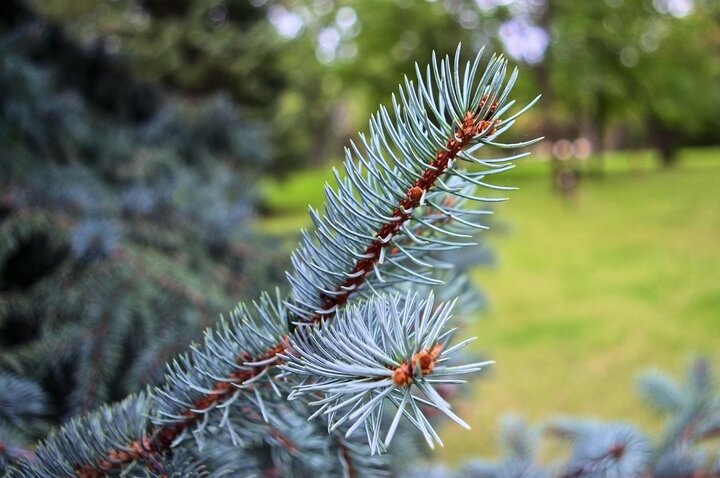
If the needles are square or four-sided, you are looking at a spruce needle. The color may range from dark green to quite blue, but if the needle rolls between your fingers as smoothly as a square wheel, it's a spruce. If you pull a needle away from the branch, you’ll find a tiny woody peg left behind. This is another unique characteristic of spruce, not found in pine, fir or yew. The two most common spruces grown in Nebraska are below.
- Colorado spruce – dense pyramidal tree, stiff upright branches, ¾-1 inch-long sharp needles
- Norway spruce – pyramidal tree, secondary branches are pendulous (hanging down) as the tree ages, ½-1 inch-long sharp needles
Step Three: If you try rolling the needle between your fingers and it won't roll at all because it's flat, then the tree is a fir or yew.

Firs are large landscape trees, typically 40-50 feet in height at maturity, which distinguishes them from our next plant. Two firs commonly grown in Nebraska are concolor and balsam fir.
- Concolor or white fir – looks very similar to Colorado spruce, with a dense pyramidal shape. Needles are bluish or gray green, 1.5-2.5 inches long and rounded at the tip, giving them a soft texture when touched, compared to the sharp bristly needles of spruce.
- Balsam fir – less common than concolor fir, although often grown on tree farms for Christmas trees. Very dark green 5/8-1 inch needles.
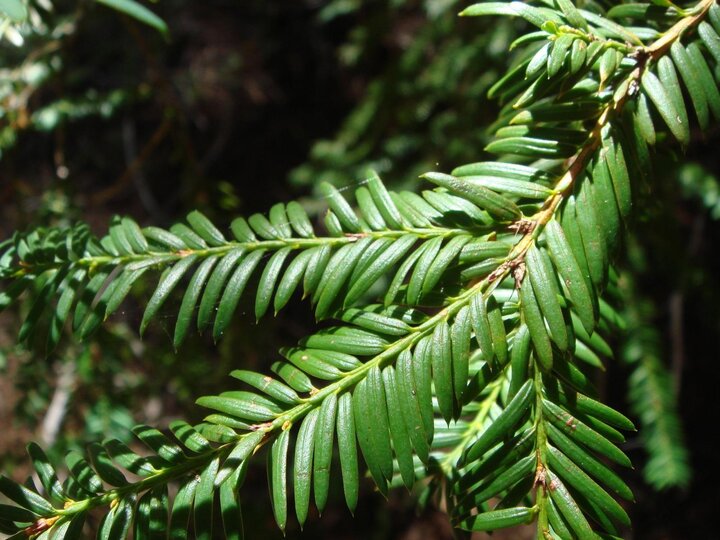
Is the plant you’re identifying a dark green shrub or small evergreen tree with shiny, flat needles that remind you of fir needles but aren't stiff or prickly? Then it’s a yew, Taxus spp. Yews are another versatile group of landscape evergreens. Their soft foliage is a popular trait.
Step Four: Are the leaves on your evergreen not needles, but instead many small leaf sections attached end-to-end? Then it’s likely either a juniper or arborvitae.
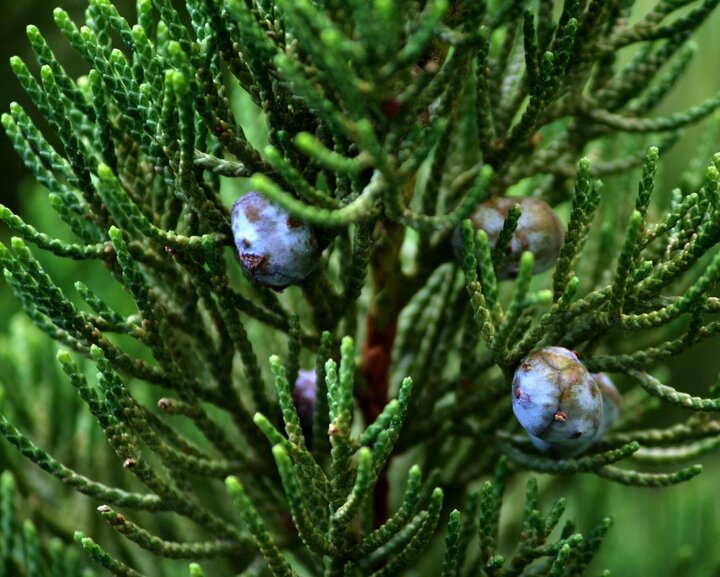
These plants many be tall trees, smaller shrubs or flat creeping groundcover specimens. But no matter the shape of the plant, if the needles are lapped over one another like the shingles on a roof, it's a juniper. Foliage may be anywhere in texture from soft to prickly, but all junipers share the trait of overlapping leaf scales. One of the most common juniper species found in windbreaks is eastern red cedar, Juniperus virginiana, commonly called “cedar”. Although it’s not a member of the true cedar genus, this unfortunately makes it easy to confuse with our next plant.
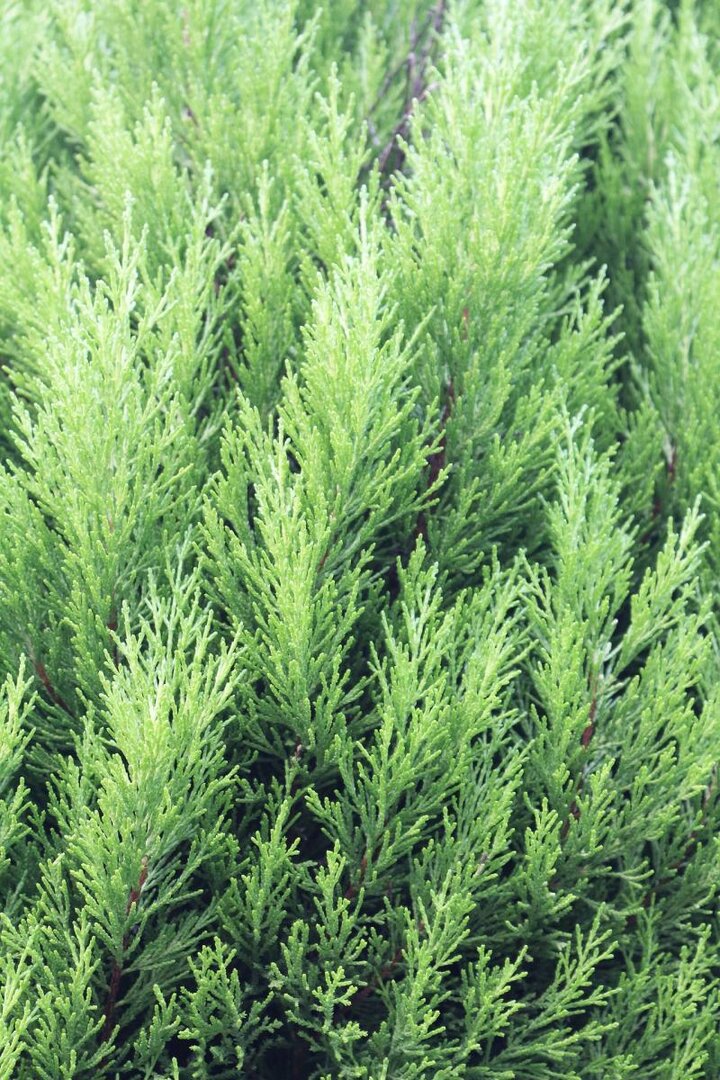
If your plant has soft branches of flat vertical foliage, consisting of bright green overlapping scales then it’s an arborvitae. The most common species found in Nebraska is eastern arborvitae or white cedar.
Evergreen identification is more than just an intellectual exercise or a chance to show off to your friends and neighbors -- it helps you track down information on plants you might want to know more about. Maybe you have a problem and want advice from a nursery or garden center. Or perhaps you found a plant in a friend’s landscape you like and want to add a similar plant to your home grounds. Being able to narrow down the plant type to pine, spruce, fir, yew, juniper or arborvitae is a big help when you go to the garden center.
Images from Pixabay.com.
- Pine needles
- Fir needles
- Yew needles
- Juniper foliage
- Arborvitae foliage
Search Our Archive
Associated Video
Evergreen Differences
Evergreen Differences
Nebraska Extension Landscape Horticulture Specialist Kim Todd shows the differences in conifer trees - pine, spruce and fir.